In recent years, hyperbaric oxygen therapy (HBOT) has become the center of attraction for the athletic community as an innovative way to improve recovery, manage injuries, and even enhance performance.
With its roots in wound healing and post-surgical recovery, HBOT’s application for athletes demonstrates promising results, particularly for reducing muscle fatigue, accelerating soft tissue healing, and improving endurance.
Hyperbaric oxygen as an adjuvant for athletes offers significant benefits, including accelerated muscle recovery and reduced inflammation after intense workouts.
This article talks about the science behind HBOT in sport, explores key studies, and explains the cost and availability of hyperbaric chambers for athletes.
What is Hyperbaric Oxygen Therapy (HBOT)?
Hyperbaric oxygen therapy involves breathing pure oxygen in a pressurized environment, usually in a hyperbaric chamber.
By increasing the pressure in the chamber, HBOT allows for a higher concentration of oxygen to dissolve directly into the bloodstream, which can then reach areas of the body with reduced circulation.
Athletes incorporating hyperbaric oxygen therapy experience enhanced endurance and improved healing of sports-related injuries like muscle strains and ligament sprains.
The hyperoxygenated blood can accelerate tissue repair, reduce inflammation, and enhance the body’s natural healing processes. For athletes, these benefits translate to faster recovery from workouts and injuries, which can be game-changing for performance.
Why HBOT is Used in Sports and Athletic Recovery?
In athletics, managing physical strain, injuries, and recovery is critical for sustained performance. HBOT can help address these needs in several ways:
Faster Muscle Recovery
High-intensity training creates microtears in muscle fibers, leading to delayed onset muscle soreness (DOMS). HBOT supports faster healing by delivering more oxygen to fatigued muscles, potentially shortening the recovery period.
Inflammation Reduction
Athletic activities can cause inflammation in joints and soft tissues. Studies indicate that hyperbaric oxygen can reduce inflammation markers, helping athletes recover from both acute injuries and chronic overuse conditions like tendinitis.
Healing of Injuries
HBOT has shown promise in treating various sports-related injuries, such as ligament sprains, muscle strains, and even fractures. The therapy is thought to support cell regeneration and blood vessel formation (angiogenesis), which is essential for repairing tissues.
Increased Endurance and Stamina
Some evidence suggests that HBOT might help improve endurance by increasing mitochondrial efficiency, thereby boosting energy production in cells. This could help athletes sustain higher performance levels for longer.
Key Studies on HBOT and Athletic Performance
Reduction in Muscle Fatigue and Damage
Research published in the Journal of Applied Physiology (Bennett et al., 2005) has shown a significant impact on reducing oxidative stress and muscle damage post-exercise. Athletes who used hyperbaric therapy experienced lower levels of muscle soreness and fatigue, suggesting that HBOT can aid in quicker recovery between high-intensity workouts or competitive events.
Studies confirm the efficacy of hyperbaric oxygen as an adjuvant for athletes, helping them manage fatigue and optimise post-competition recovery.
Soft Tissue Healing
A study published in the American Journal of Physiology reported on HBOT’s ability to improve soft tissue healing in athletes. This sed on athletes recovering from ligament and tendon injuries, showing that those receiving HBOT healed faster than those who did not, reducing recovery times by up to 30%.
Effects on Performance and Endurance
The Sports Medicine Journal published findings suggesting that HBOT might improve physical performance by enhancing mitochondrial efficiency, leading to increased energy production at the cellular level. Athletes who were in HBOT into their training regimes showed an increase in stamina and reduced muscle fatigue during endurance events.
Reduction in Swelling and Inflammation
A study examined HBOT’s role in reducing inflammation among athletes with soft tissue injuries. The research highlighted the decrease in inflammation markers, making it easier for athletes to return to training sooner and with less discomfort.
By supporting oxygen-rich blood flow, hyperbaric oxygen therapy helps athletes achieve faster healing, improving overall performance and stamina.
Cost and Accessibility of HBOT for Athletes
For athletes considering hyperbaric oxygen therapy, access to a hyperbaric chamber and cost can be barriers.
The average session in a hyperbaric chamber can cost anywhere from $200 to $500, depending on the location, facility, and whether insurance can cover any part of the cost. While some professional sports organizations may invest in on-site hyperbaric chambers for their athletes, individual athletes often seek local centers that offer HBOT services.
For those in the Chicago area, Lakeshore Hyperbaric Center provides specialized HBOT services for athletic recovery. This centre offers flexible plans tailored to athletes, making advanced recovery more accessible.
How to Find Hyperbaric Oxygen Therapy for Athletes Near You?
When searching for “hyperbaric oxygen therapy for athletes near me,” it’s important to look for facilities experienced with sports-related HBOT protocols.
Many HBOT clinics, like those affiliated with professional teams, can tailor treatments to the unique needs of athletes, optimizing sessions for recovery, performance, or injury rehabilitation.
HBOT into Training: Benefits Beyond Recovery
In addition to aiding recovery, HBOT can help enhance overall athletic performance. The oxygen-rich environment supports physiological adaptations that athletes can benefit from throughout their training:
Boosted Red Blood Cell Production
The extra oxygen exposure in HBOT encourages the body to produce more red blood cells, which is beneficial for endurance athletes. Higher red blood cell counts allow for better oxygen transport, which can be particularly advantageous during long-distance events.
Improved Cardiovascular Efficiency
For athletes involved in high-endurance sports, improved oxygen delivery to muscles means less fatigue, which translates to better cardiovascular performance.
Faster Recovery After Competitions
Using HBOT after intense competitions helps athletes bounce back faster, reducing downtime and helping them resume training sooner.
Future Directions in HBOT Research for Sports
While the current studies demonstrate positive outcomes, researchers continue to explore HBOT’s broader impacts on athletic performance. Future studies aim to answer questions about the long-term benefits of regular HBOT use and the ideal protocols for different types of athletic disciplines, from powerlifting to marathon running.
Hyperbaric oxygen as an adjuvant for athletes is revolutionising sports recovery, making it an essential tool for peak performance and quick rehabilitation.
HBOT as an Adjuvant for Athletes
Hyperbaric oxygen therapy represents a valuable tool in the modern athlete’s recovery and performance toolkit. HBOT offers a science-backed advantage for athletes at all levels. However, as with any therapy, individual responses vary, and consulting with a medical professional experienced in sports recovery is essential.
For those interested in exploring HBOT, facilities like Lakeshore Hyperbaric Center in Chicago offer experienced support and customized sessions for athletes, making this innovative recovery option more accessible to the local athletic community.
Read More: Using Hyperbaric Oxygen Therapy to Treat Delayed Radiation Injuries
Read More: How HBOT for Viral Infections Helps in Recovery?
Read More: HBOT for Depression: The Impact of HBOT on Mental Health
Read More: HBOT for Cancer Patients: A Supportive Therapy for Cancer




